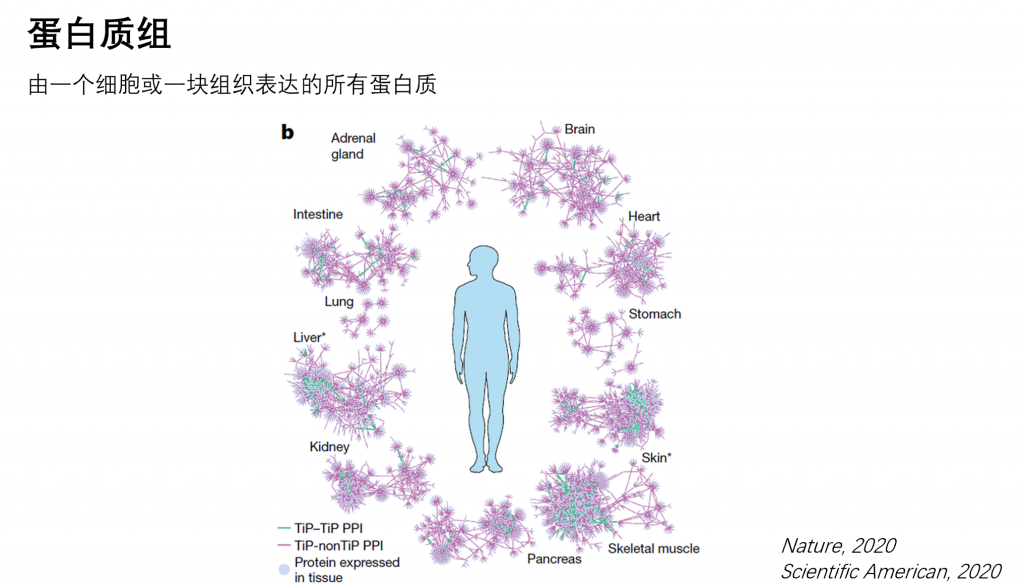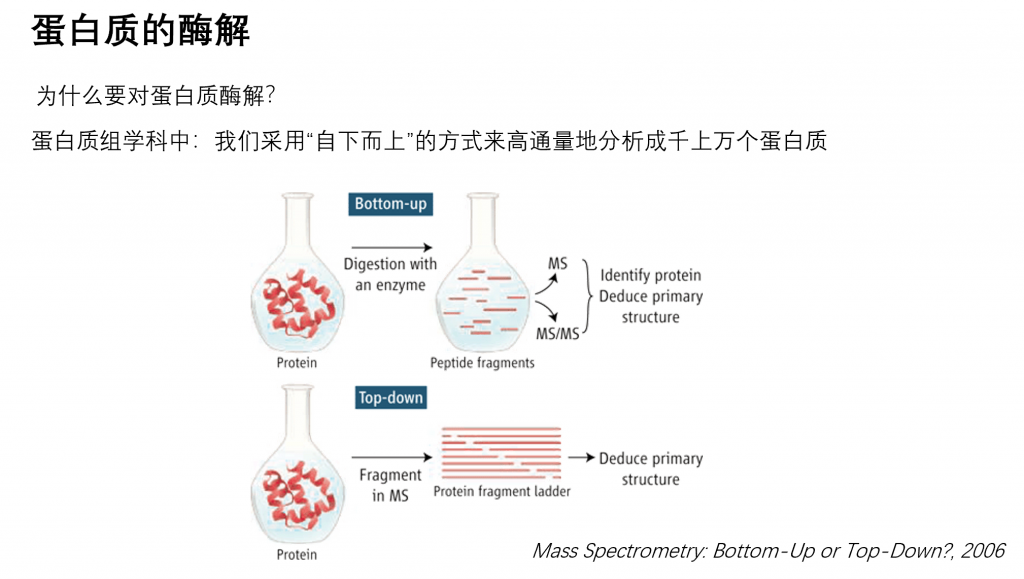原标题:蛋白质是什么?(下)
蛋白质组:蛋白质的4+级结构(上)
蛋白质组:蛋白质的4+级结构(中)
我们前面讲了蛋白质的4级与4+级结构,大家应该对这张图有很直接的理解了。每个点是一个蛋白,每条线是蛋白之间的关系,每一簇是一个蛋白的4+结构和或蛋白质网络。人的身体里面有不同的网络、它们相互联系以组成这个有活力的生命体。

我们上面从蛋白质的简单讲到复杂,而蛋白质的酶解可以被认为是的对这个过程的反向:把一个线团给拆成线、然后再用剪刀这条线剪断,就是蛋白质酶解的过程。

我们在认识一个问题之前,要了解我们做它的目的;蛋白质为什么要酶解呢?在自然界里蛋白质酶解是无时无刻不在发生的,因为蛋白质是我们人体的营养来源之一,我们喝蛋白粉、我们吃肉,都是补给自己、供应能量。猪、牛的蛋白质不能被我们直接的利用,而要首先通过酶解转变成小分子多肽或短肽、乃至氨基酸,才能被我们吸收利用;再通过前述的过程搭建我们人体的蛋白质。蛋白质的酶解,英文的意思叫蛋白质的消化,是很好理解的。这个过程也是通过若干种蛋白酶的协同的相互作用去进行的。


我们现在看如何对蛋白质进行酶解。我们是用一个类似于小剪刀的东西把这个线段给剪开;这个小剪刀叫做蛋白酶,它们的剪开位置往往是有规律的。胃里的一种蛋白酶,只在K和R的后面剪开;但是其他地方比如A H S后面都不剪。这样其实也给了我们一个线索,我们可以预先的知道,如果是把一堆蛋白质给扔到这种酶里面、最终会变成什么样子。
而当我们换一种蛋白酶,它剪的方式就又不一样了、得到的结果也不同。可以想象,如果同时丢进去很多种蛋白酶,终究会把蛋白质们剪成短肽乃至氨基酸。

总结一下:
